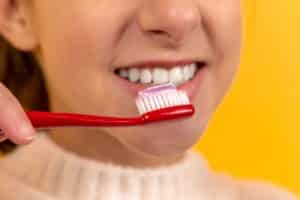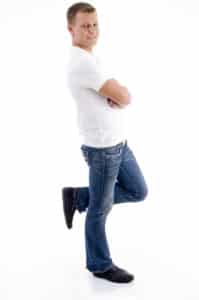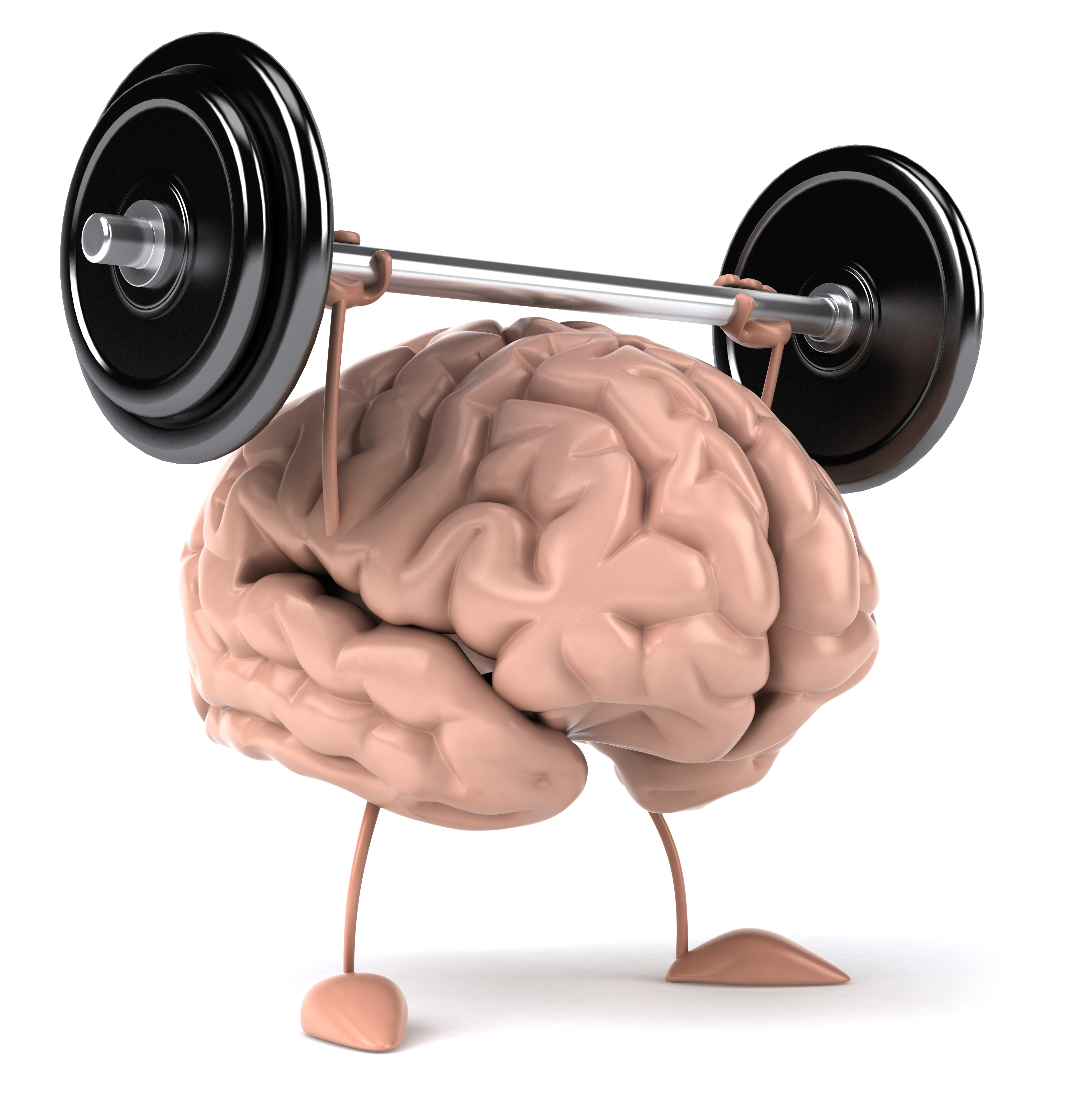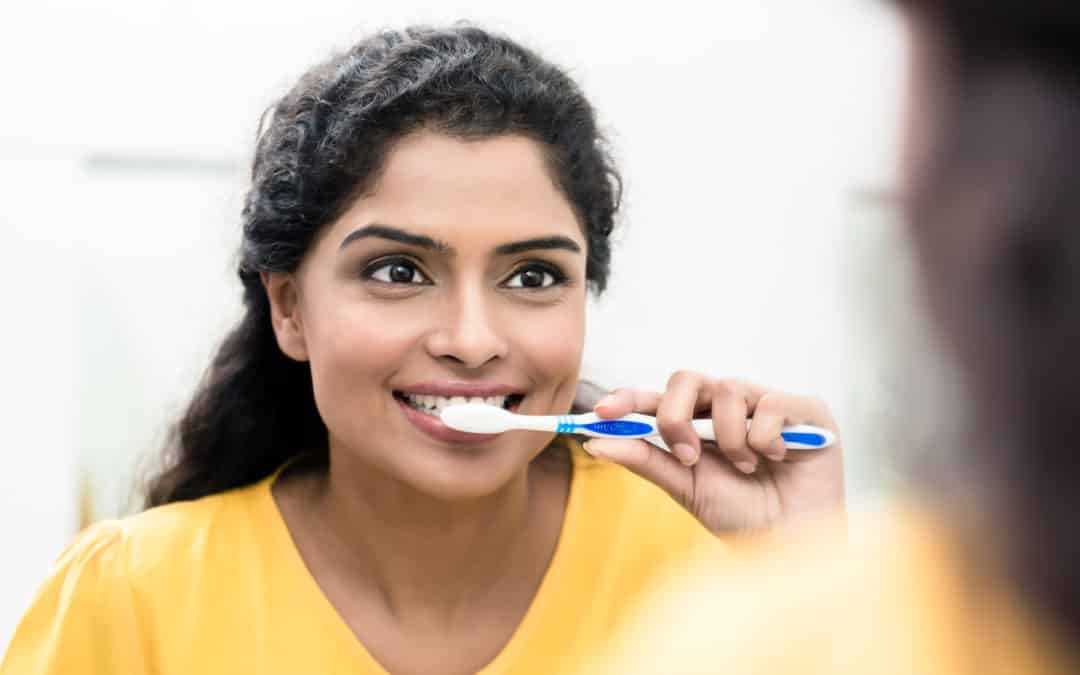We all want to increase our mobility and decrease senility as we age. Assuming that we all currently brush our teeth (and floss), there are two actions that can be incorporated into a daily dental routine. These actions not only help improve long term health, but also shorten the time of your dental routine! And if you don’t brush and floss your teeth, start now! A good dental hygiene routine is one of the simplest things you can to for long term health.
To your daily dental routine, I recommend adding the following actions. Add the actions below, practicing each action until you feel confident before adding the next one. The goal is to incorporate all these actions at the same time while brushing your teeth.
- Brush with your non-dominant hand
- Balance on one foot while brushing, being sure to switch feet
- Now add another tooth brush and brush with both hands while balancing on one foot.
My wife thinks I’m crazy, as I do the above daily; however I do feel that it has been beneficial. I have even been known to shave with one hand, brush with the other all while balancing on one foot.
Balancing on one leg and brushing your teeth with your non-dominant hand may sound like a peculiar combination, but the benefits it offers are worth considering. Below are the advantages of incorporating this simple practice into your daily routine and how it can positively impact your overall well-being.
- Improved Physical Coordination: Balancing on one leg requires core strength, stability, and coordination. When you stand on one leg, you engage the muscles in your abdomen, lower back, hips, and legs, thereby improving your balance and stability over time. Brushing your teeth with your non-dominant hand adds an extra layer of complexity, forcing your brain to form new neural connections and enhance fine motor skills. As a result, this practice can help improve your overall physical coordination and body awareness.
- Enhanced Brain Function: The brain is a remarkable organ capable of forming new neural pathways throughout our lives. By brushing your teeth with your non-dominant hand, you engage your brain in a novel activity that challenges its established patterns. This stimulation can lead to increased neural plasticity and cognitive flexibility. Studies have shown that engaging in activities that require coordination between both hemispheres of the brain, such as using your non-dominant hand, can improve overall brain function and mental agility.
- Mindfulness and Focus: Balancing on one leg and brushing your teeth with your non-dominant hand requires a higher level of attention and focus than the regular autopilot mode we often slip into during mundane tasks. By deliberately engaging both your body and mind, you cultivate mindfulness, which can have a profound impact on your overall well-being. Mindfulness promotes a sense of presence, reduces stress, and enhances your ability to focus on the task at hand, helping you start your day with a centered and calm mindset.
- Efficient Use of Time: In today’s fast-paced world, finding time for physical exercise or mindfulness practices can be challenging. By combining two simple activities, you can optimize your time and make the most of your daily routine. Balancing on one leg and using your non-dominant hand while brushing your teeth allow you to incorporate physical and mental exercise seamlessly into your mornings. This efficient use of time means you can reap the benefits without adding extra activities to your already packed schedule.
- Increased Self-Awareness: Balancing on one leg and performing an everyday task with your non-dominant hand forces you to become more aware of your body and movements. This heightened self-awareness extends beyond the bathroom, positively impacting your overall posture, body alignment, and movement patterns throughout the day. By cultivating a conscious connection with your body, you may notice improvements in your overall balance, coordination, and physical well-being.
Conclusion: Incorporating small changes into our daily routines can have a significant impact on our physical and mental well-being. Balancing on one leg and brushing your teeth with your non-dominant hand is a simple yet effective practice that offers numerous benefits. From improved physical coordination and enhanced brain function to increased mindfulness and self-awareness, this practice allows you to optimize your time and create a positive start to your day. So, next time you pick up your toothbrush, consider challenging yourself with this unconventional but worthwhile habit. Your body and mind will thank you.




